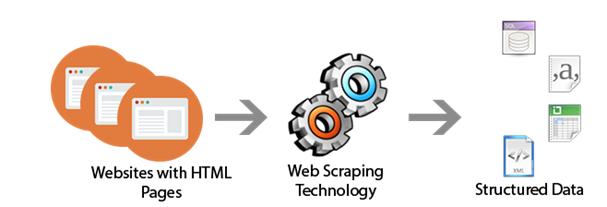Technology Giants' choice:EDGE Computing👨💻
- Sushree Barsa Pattnayak
- Sep 24, 2020
- 3 min read
For over a decade centralized cloud computing has been considered a strong datacentric computing architecture where compute & storage facilities are efficient & these are also fitting the business need . In recent days there is extreme growth in internet connected devices and that is IoT(Internet of Things) .So this has forced the technology giants to rethink on cloud computing architecture from centralized to distributed architecture & here comes the distributed architecture i.e EDGE computing.

Figure 1 : EDGE Computing
In this blog i have discussed on the following key points-
-What is EDGE computing ?
-Traditional Cloud computing Vs. EDGE computing
-Benefits of EDGE
-Potential industries for EDGE
-Use cases and challenges
-Devices used in this technology
Overview of EDGE computing & some famous definitions ,
Wikipedia
•Edge Computing is a distributed computing paradigm which brings computation & data storage closer to the location where it is needed to improve the response time & save band width .
Techopedia
•Edge computing in IT is defined as the deployment of the data handling activities or other network operations away from centralized and always connected network segments and toward individual sources of data capture, such as endpoints like laptops ,tablets or smart phones.
HPE
•Edge computing is a distributed ,open IT architecture that features decentralized processing power , enabling mobile computing and Internet of Things(IoT) technologies . In edge computing data processed by the device itself or by a local computer or server , rather than being transmitted to a data center.
Gartner
•It defines as a part of a distributed computing topology in which information processing is located close to the edge” where things and people produce or consume that information .
In all these definitions ,one thing is common: The data computing happens at the edge of the device or at the nearest location where data is generated.This improves the data processing significantly by reducing the data travelling between devices and centralized cloud centers.
Cloud computing is a technology by which remote servers hosted on the internet store and process data ,rather than local servers or personal computers.This is the on-demand availability of computer system resources especially data storage and computing power ,without direct active management by the user.
To leverage 5G wireless technology and AI to enable faster response times,lower latency (ability to process very high volumes data with minimal delay) and simplified maintenance in computing .This is where EDGE computing comes in which may seen as an extension to the cloud , but which is in fact ,different in several basic ways .
EDGE computing enables data to be analysed ,processed and transferred at the EDGE of a network . The idea is to analyse where it is stored , in real time without latency ,rather than send it far away to a centralized data center.
The basic difference between EDGE computing and cloud computing lies in the place where the data processing takes place . At the moment ,the existing Internet of Things(IoT) systems performs all of their computations in the cloud using data centers.Experts believe the true potential of EDGE computing will become apparent when 5G networks go in mainstream.
Benefits of Edge computing
•Real time data processing
•Reduces latency
•Reduces Internet bandwidth usage and associated cost
•Server resources are free most of the time
•More responsive & robust application performance
•Improves business efficiency and reliability

Potential Industries
•Banking & Insurance
•Healthcare/Life Science
•Energy sector
•Travel, Transports & Logistics
•Infrastructure development
•Airlines & shipping
•Public sector –smart cities
•Manufacturing
•Agriculture
•Retail
These are the potential industries where data management is a big issue .Real time and large amount of data can be stored ,monitored and exchanged using the EDGE computing in these industries.Many industries are using it already for having continuous data processing.
Several use cases are there which are being in used different sectors for higher accuracy with better quality management .
Use cases are as follows-
•Vision recognition with deep learning
•Motion detection application for security camera
•Wearable healthcare devices
•Autonomous vehicles
•Smart homes IoT devices
•Digital Image processing devices
•Lane traffic congestion tracking
•Air quality ,water quality & leakages, structure monitoring
•Logistics & containers tracking
•Sensor based data collection of farm equipment
EDGE computing devices
The devices used in EDGE computing are as follows-

Image of Raspberry pi

Image of LattePanda Alpha

Image of Jetson Nano

Image of Udoo bolt

Image of Intel Neuro compute stick 2

Image of Google Coral Edge Tpu

Image of Google Coral USB Accelerator
Challenges of Edge Computing
•Co-location cloud data centers
•5G technology
•Strong security measurement
•More local H/W maintenance
•Network connectivity and Electrical power management
Written by-
Sushree Barsa Pattnayak
Intern CoE-AI ,CET,BBSR
Brought to you by-
CoE-AI(CET-BBSR)-An initiative by CET-BBSR,Tech Mahindra and BPUT to provide to solutions to real world problems through ML and IoT

.png)




Comments